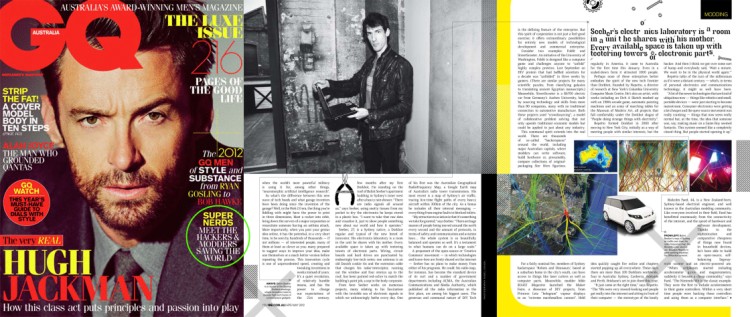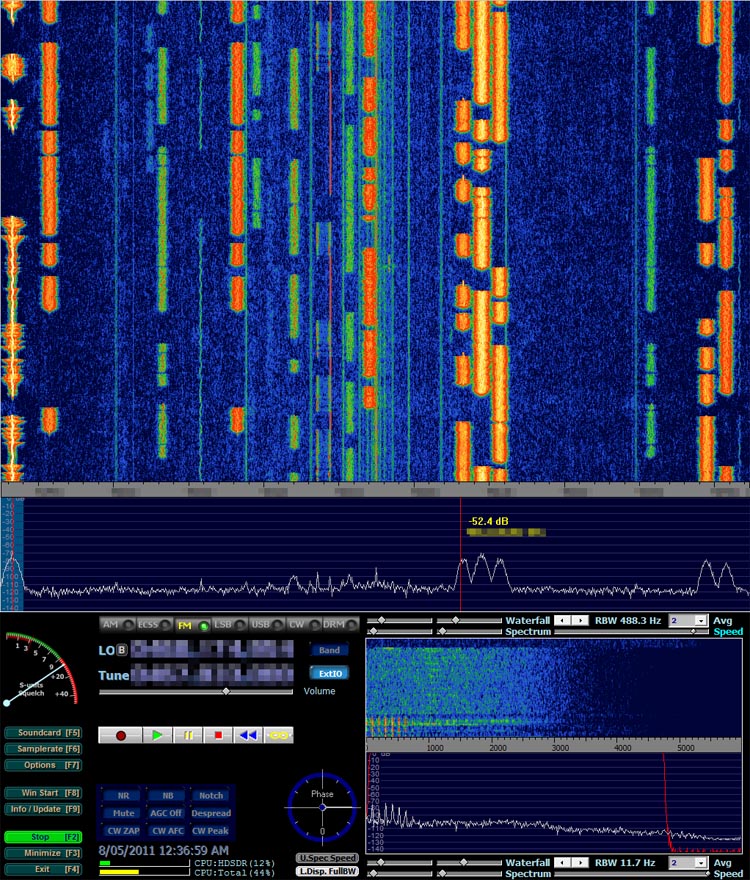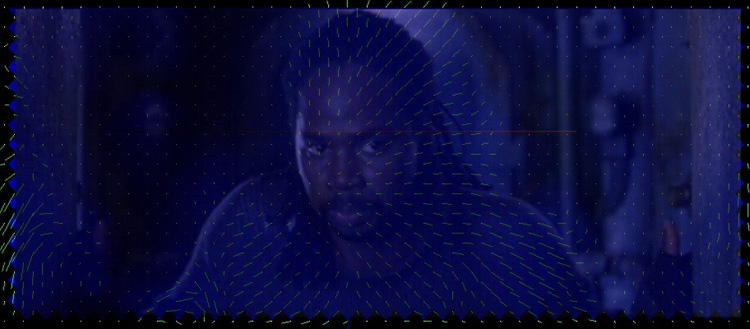Testing
Mode S in the US
Sun, 24/07/2011 - 15:37 — balintSan Francisco & Silicon Valley:
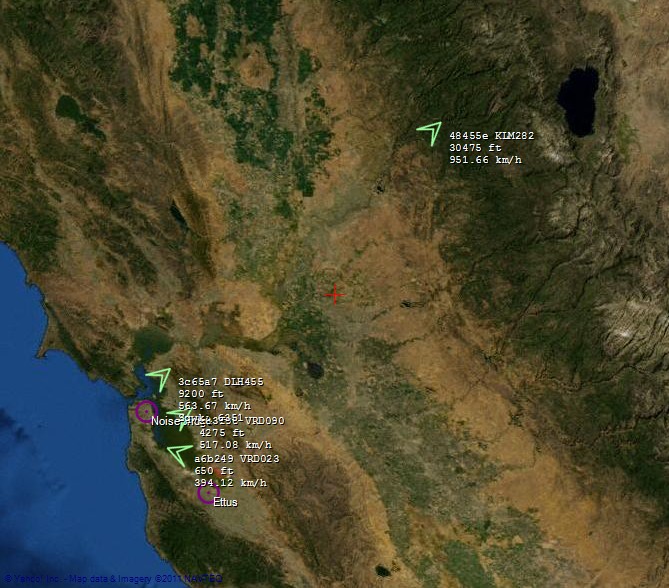
New York, New York:
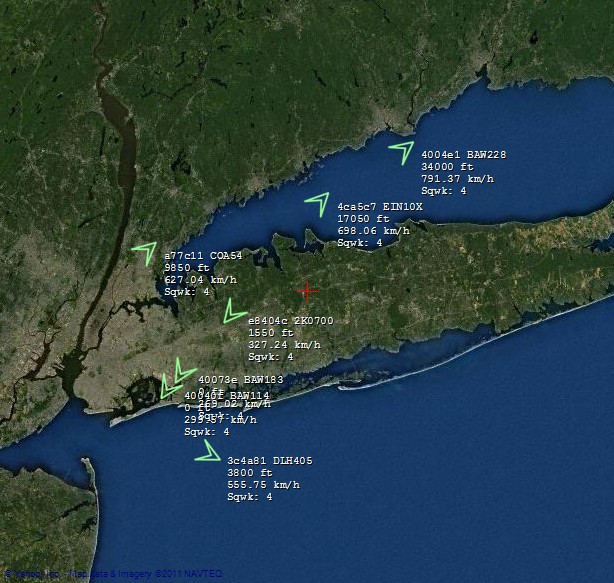
SCOTSUXX:
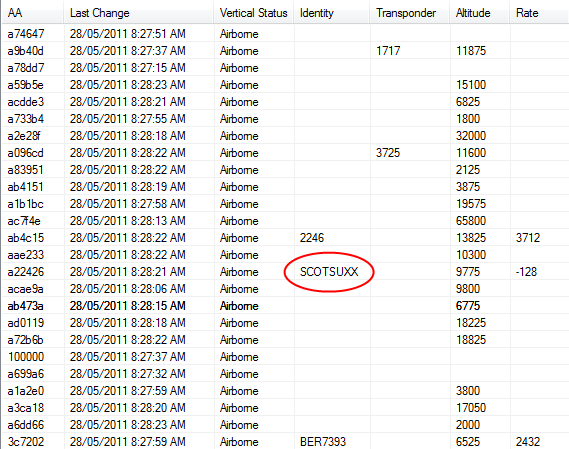
AviationMapper Demo
Tue, 24/05/2011 - 13:43 — balintAviation Mapper is LIVE! Click here to use it.
The Aviation Mapper launch video
Running live at Sydney Airport streaming AvMap via 3G mobile Internet
Running the Aviation Mapper desktop app
Presentation at Dorkbot Sydney Finale 2011
Presentation at Ruxcon 2011: "Hacking the wireless world with Software Defined Radio
Comparison to SBS-1
Mon, 23/05/2011 - 18:13 — balintThe aviation tracking system ("Modez") and an SBS-1 (thanks to Matt Robert) with its Base Station software were run side-by-side to undertake a rough performance comparison. For various technical notes on the SBS-1, including sampling the baseband output with an LFRX daughterboard, please see the page on my wiki. If you're interested in the photos of the major outdoor test where the SBS-1 was pitted against Modez, visit the album on my gallery.
Software Defined Radio
Sun, 22/05/2011 - 19:42 — balintMy Software Defined Radio experiments featured in GQ Australia (April/May) 2012!
SDR-powered Aviation Mapper is now LIVE! Click here to use it.
The Aviation Mapper launch video
Have a look at my Hi-Def intro video on using SDR on HF that was featured on Slashdot:
(The 'cheap SDR' they refer to can be found on my wiki for GNU Radio/Linux and Windows.)
The Software Defined Radio (SDR) I currently use is the Universal Software Radio Peripheral (USRP) 1 made by Ettus Research (in a custom housing!):
I've used it for several of my projects, including an aviation tracking system with a live streaming 3D Google Earth front-end:
Demonstration of BorIP network streaming between HDSDR and GNU Radio using USRP 1:
Example of HDSDR using USRP:
Physically Controlled LED Display
Sat, 06/10/2007 - 15:59 — balintA little something I made in my spare time:
(More details coming later...)
Motion Vector Visualisation
Mon, 07/05/2007 - 18:51 — balintUsing my modified version of ffdshow, which sends a video's motion vectors via UDP to an external application, I visualised the motion vectors from The Matrix: Reloaded inside my fluid simulation. The grid resolution is set based upon the macro-block resolution in the video sequence and each type-16x16 motion vector controls one spatially-matching point on the velocity grid. The following visualisation is taken from the scene where they are discussing the threat to Zion while inside the Matrix before Neo senses that agents are coming (followed by Smith) and tells the ships' crews to retreat.
The final video is on YouTube, with the MVs overlaid on top of the source video.
Blue Milk
Mon, 07/05/2007 - 18:50 — balintThis is the new-and-improved fluid simulation in action. I'm perturbing the 'blue milk' with my mouse. Watch for the darker region form and expand behind the point of perturbation. Due to finer resolution of the velocity grid, the linear artifacts apparent in the earlier version have disappeared and it now looks smooth in all directions.
2D Fluid Dynamics Simulation
Mon, 07/05/2007 - 18:49 — balintVelocity-grid-based 2D fluid simulation with effects that interestingly enough resemble Navier-Stokes simulations (well, a little anyway).
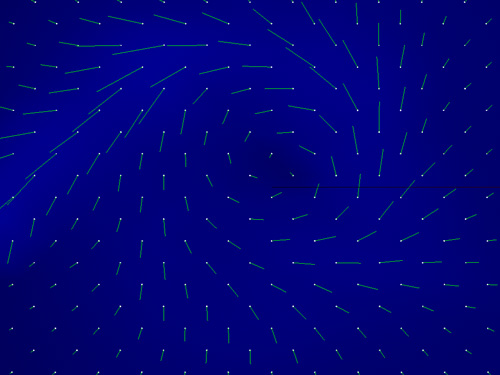
Reversing My Motion Vectors
Mon, 07/05/2007 - 18:40 — balintTo more carefully study the effects of reversing motion vector directions, I created a 'control' video of me making particular motions at different speeds. You can witness the results:
Mashed up: The Matrix - Reloaded
Mon, 07/05/2007 - 18:38 — balintThe following snippet of the Burley Brawl from The Matrix: Reloaded has been passed through my hacked version of libavcodec to reverse the direction of each motion vector:
Motion Vector Experiments
Mon, 07/05/2007 - 18:28 — balintThe use of motion vectors for motion compensation in video compression is ingenious - another testament to how amazing compression algorithms are. I thought it would be an interesting experiment to get into the guts of video decoder and attempt to distort the decoded motion vectors before they are actually used to move the macro-blocks (i.e. before they affect the final output frame). My motivation - more creative in nature - was to see what kinds of images would result from different types of mathematical distortion. The process would also help me better understand the lowest levels of video coding.
In the end I discovered the most unusual effects could be produced by reversing the motion vectors (multiplying their x & y components by -1). The stills and videos shown here were created using this technique. Another test I performed was forcing them all to zero (effectively turning off the motion compensation) but the images were not as 'compelling'.
Here are some stills with Neo and The Oracle conversing from The Matrix: Reloaded after the video's motion vectors have been distorted by my hacked version of libavcodec:
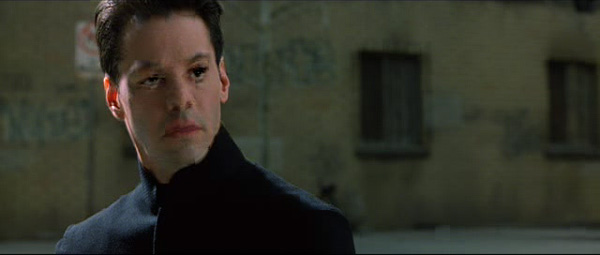
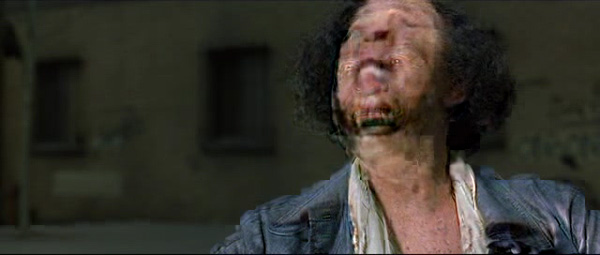
Time lapse video of a cloudy sunset
Mon, 07/05/2007 - 13:45 — balintDuring lunchtimes at high school I created many time lapse sequences of the harbour and the evolution of cloud formations. I filmed on a video camera at then sampled one frame every X seconds to achieve the speed up.
The frames of the video above were actually captured on my digital still camera (for extra quality) using the accompanying remote capture software.
Sliding Background Jump
Mon, 07/05/2007 - 13:36 — balintInspired by a music video (which I can now no longer recall) I attempted to replicate this special effect that involves sliding the background slower than the keyed moving foreground to emphasise the motion. The two separate layers are composited as opposed to just doing a pan across the original footage. Considering I'm not using calibrated video equipment and the lighting conditions changed throughout the takes, I think the result is okay.
YouTube Popularity Experiment
Mon, 07/05/2007 - 13:29 — balintI have published many videos on YouTube. The most popular one (in fact the first one I ever posted) was only viewed ~1,750 times. I'm not having delusions of grandeur, but I was wondering what sort of video could be more popular? Obviously if it's original content then that would mean personal success. However for the sake of this experiment, what subject would quickly attract viewers? One evening I was watching David Letterman and the answer struck me. Two words: Paris Hilton. (Forgive me: I never thought her name would be perpetuated in my webspace. I have my own...arhem...negative opinion on her rise to 'fame', what she symbolises in this age, etc, etc - but that's not the point of this experiment.)
I posted the following three videos (rather funny excerpts from Letterman). The first of the videos' view count quickly shot into the mid-thousands and now has come to relative rest at 20,000! That's popular culture (and many other things) for you.
Chroma key fun
Mon, 07/05/2007 - 12:28 — balintSome weekends ago I had access to a blue screen and performed a quick chroma key experiment.
Here is a neat trick you can do to make oneself see-through:
I also saw this as an opportunity to re-use an animation I created back in 2000 (it's not easy balancing your entire body on a small blue box!):

